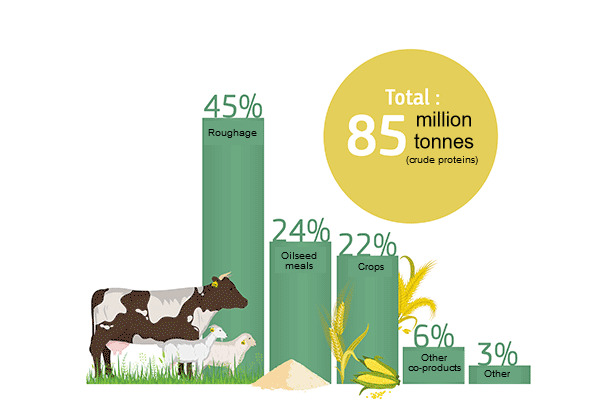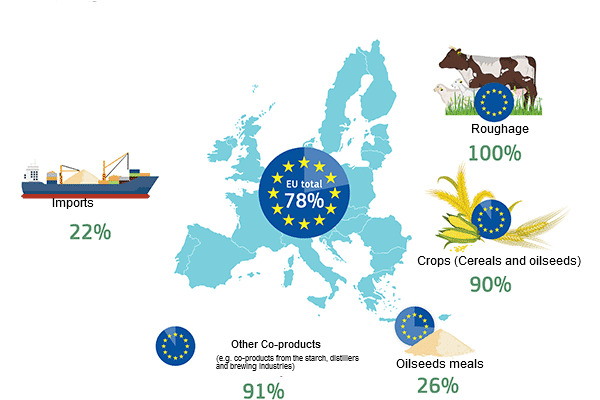The European Commission published its latest ‘EU Feed Protein Balance Sheet', which provides a comprehensive overview of EU feed supply. The publication of this balance sheet is a direct follow-up of the report on the development of plant proteins in the European Union published in November 2018 to reflect on how to further develop their production in an economically and environmentally sound way. One of the report's proposals was to improve market analysis and market transparency through better monitoring tools which led to the publication of an updated balance sheet presenting the feed supply, demand and trade of various protein sources and including roughage for the first time.


The figures show a contrasting situation with a high self-sufficiency rate for products low in protein content, such as roughage, but low for products with high protein content, such as soya beans. Looking at the total EU use of feed consumption, about 80% of the feed is from EU origin, which is a positive trend.
In terms of protein content, the balance sheet also shows that the EU’s self-sufficiency rate is high for products with less than 15% protein content and for products with over 50% protein content, respectively at 97 and 92% of self-sufficiency. In contrast, the EU produces only 29% of what it consumes in products with a protein content of 30 to 50%.

Monday May 20, 2019/ EC/ European Union.
https://ec.europa.eu




